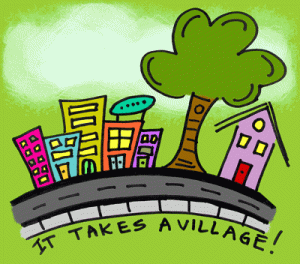Teambuilding with Kagan!
 |
| My kiddos sharing the contents of their "Me Bags" within their table groups |
Teambuilding creates enthusiasm, trust, and mutual support, which in the long run leads to more effective academic work! -Dr. Kagan
Effectively organizing teambuilding activities, can help the child who feels the most unsuccessful become the MOST successful member of the team. Every student gets to contribute his/her own skills to better the group as a whole. I have seen the quietest students blossom into being more active participants in their group and in class in general, which of course then leads them to academic success as well. In the video below you can see my students participating in Kagan Teambuilding activities the first couple weeks of school. They shared “Me Bags” with their groups, they also participated in the Team Sentence building activity, the Team Word Finder activity, and the About Me Question Cards- just to name a few! ALL students were engaged and excited to participate with each other. Now being ONLY 3 weeks into the school year my students are ALREADY working together cohesively in teams, and not just when I ask them to! They are already comfortable enough that they are naturally gravitating towards teamwork even when I haven’t prompted them to do so. Just today during a teambuilding activity, I heard one of my students say to the other one “Look! Zolin came up with the word “due.” That was a good word Zolin!” It was super cute, and exactly the type of encouragement, feedback, and respect that I hope to build into my students!
Kagan says that through teambuilding students get to know, like, and respect their teammates. Student teams meet some of students most important needs: to feel known; to feel liked; to feel accepted; to feel a sense of belonging; and to be successful. Here are the 5 essential components that Kagan suggests are needed to develop cohesive teams:
1. Getting Acquainted: Getting to know your teammates. I used the “Me Bag,” and the “About Me Questions” activities from Kagan, to help implement this structure (seen in the video above).
2. Team Identity: Forming a team identity. You can have students create team names, posters, cheers, etc. I have my kiddos come up with team cheers. They love doing this, and they come out super cute. I also used the “Team Word Finder” and the “Team Sentences” activities from Kagan to reinforce this as well.
3. Mutual Support: Feeling supported by teammates. Helping students create a feeling of mutual support when they know that they can and need to rely on each other.
4. Valuing Differences: Clarifying and respecting differing values. These are activities that clarify an individuals own values and beliefs and help students come to an understanding where they respect each other’s individuality and differences.
5. Developing Synergy: Building on teammates contributions. These are tasks that encourage students to build on each other’s ideas. When cooperatively working in a group, the group product can be better than the product of even the most accomplished individual. You want your students to reach this level of cooperative learning in order to maximize their learning experience.
Collaboratively Learning,
Megan Brown







